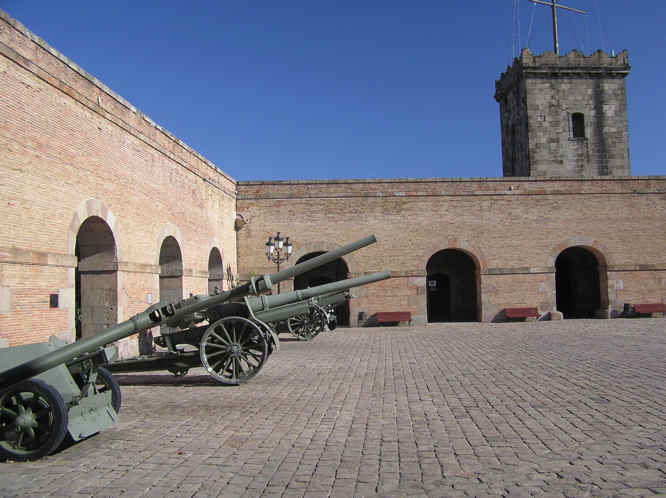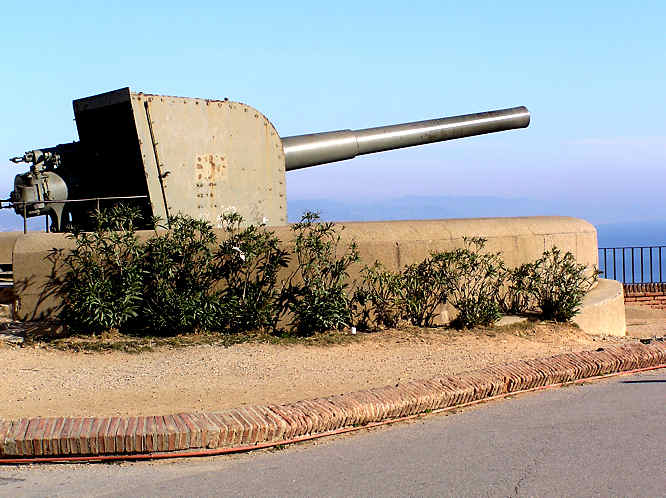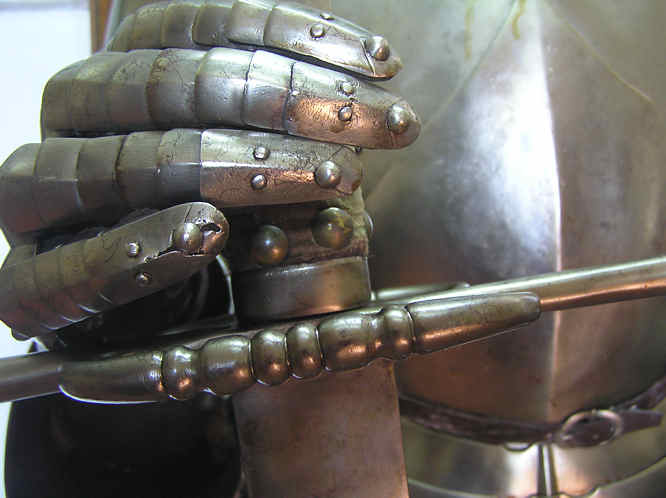Barcelona's Montjuic Fortress
Montjuic is a large hill on the edge of the city near the coast and harbour. It means Jewish mountain There a numerous attractions to visit on the hill and around its base: fine art galleries, cool green parks, the site of the 1992 Olympics, the ornate Placa d'Espanya, the music arena of Placa de Braus Les Arenes, a former bullring where the Beatles played in 1966 and a fortress.

Down the hill from the Anella Olimpica (Olympic Ring) you can inspect the masterpieces of the greatest Catalan artist of the 20th century, Fundacio Joan Miro in a specially built gallery. Parc Joan Miro contains the phallic sculpture Dona i Ocell (Woman and Bird).
Barcelon's Castell de Montjuic was built in the 17th century during the battle between Catalonia and Spain's Felipe IV, during the war known as the 'War of the Reapers'. Bourbon troops ransacked the castle 100 years later.

It was rebuilt between 1751 and 1779 in the Verdun starred pentagon style with enormous moats, bastions, and buttresses, by the Spanish Central government to keep Barcelona in line. Franco also used it to execute hundreds of political prisoners. The castle houses the military museum (Museu Militar) with a collection of weapons, lead soldiers, and military uniforms.
The best thing about the Castell de Montjuic is that it is an excellent place to get a view of the Barcelona skyline, Barcelona's Container port, the ferry terminal and the blue Mediterranean Sea. Catch the Metro to the station Avenida Paral-lel. It is at the bottom of the funicular railway that then takes you most of the way up the mountain to the Olympic pool.
It is still a long walk up hill in the hot Spanish sun to the fort. Personally I would take an air conditioned taxi. It is the best way of getting to the fort. It may not seem a long way to walk on the map but by the time you get to the top you will need a change of clothing because of the heat

Montjuic Palau Nacional - National Palace
Nearby, there is the imposing large Palau Nacional, the National Palace. The palace has been transformed in to the National Museum of Catalonia - Museu Nacional d'Art de Catalunya. The museum contains Romanesque, Gothic, Renaissance, Baroque and Modern art collections including of some pictures of Goya.
Below the National Palace are a series of terraces and fountains, which come alive with a free lights and music show on summer evenings. The palace looks older than it is. It was constructed in 1929 and became the central building of the World's Exhibition
Montjuic - Poble Espanyol - Spanish Village
To the northwest of Montjuic is the 'Spanish Village', Poble Espanyol. It looks like a tacky tourist trap, but it does provide an interesting collection buildings of different Spanish architectural styles from most Spanish regions. It was built as part of the 1929 Exposition. Some have called it just a tourist shopping centre selling expensive mass produced goods for which you have to pay an entrance fee to get in.
Montjuic - 1992 Olympic Site
The 65,000-seat Olympic stadium saw the opening and closing ceremonies and hosted many events. Around it was build the Anella Olimpica (the Olympic Ring) of sporting venues, including the Institut Nacional d'Educacio Fisica de Catalunya, a centre of sports science; the Piscines Bernat Picornell, the venue for swimming and diving events; and the striking telecommunications tower, designed by the architect Santiago Calatrava
Montjuic - Jardins de Mossen Costa i Llobera - Cactus Gardens
Most tourists miss these gardens as they are not very well sign posted. There are cacti and succulents from all around the world and some stand 20 feet high. Entry is free and the park is open from 10 to dusk. Have fun and don't touch the plants.
To get there from the castle, walk down from the seaward ridge of Montjuic and strike for the port cable car station (spot where the cables come down to earth). The station is (haphazardly) signposted. Bear right on the road running down the hill. The cactus gardens are on the steep mountain flank overlooking the port and immediately to the left of the cable car station, looking seaward. The entrance to the gardens is narrow and goes down a steep flight of steps
Travel books

